Special Reports are longer, often more technical, documents consisting of entire articles, government statements, and other documents relevant to security and peace in Northeast Asia.
Nuclear Security at the Seoul Summit

Coming in the wake of the Fukushima nuclear accident, which starkly reminded the world of the perils posed by nuclear materials, the Seoul Nuclear Security Summit faces a host of challenges. Sharon Squassoni lays out what is at stake, what outcomes can be expected and those that, unfortunately, cannot.
Sharon Squassoni is Director and Senior Fellow at the Proliferation Prevention Program of the Center for Strategic and International Studies.
Go to the articleNuclear Safety and Security After 3-11
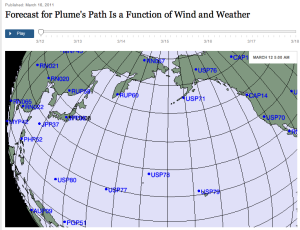
The earthquake and tsunami of March 11, 2011 did more than just devastate Japan and unleash a local nuclear disaster. Peter Hayes notes that the events at the Fukushima nuclear plant exposed a host of design flaws in current nuclear technology whose solutions are linked to dramatically unsettling security issues.
Peter Hayes is Executive Director of the Nautilus Institute for Security and Sustainability.
Go to the articleA Northeast Asia Nuclear Weapon Free Zone with a Three-plus-Three Arrangement
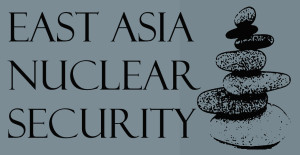
Hiromichi Umebayashi, President of the Peace Depot, assesses the prospects for a Northeast Asian Nuclear Weapons Free Zone (NEA-NWFZ) and the applicability of lessons learned during the establishment of similar treaties in other regions of the world. He writes, “there are specific wisdoms to be found in the existing NWFZ treaties . . . One is related to the provision for the entry-into-force of the treaty. If one or more state parties have concern about others’ possible noncompliance with a hard-woven NEA-NWFZ treaty, one could invent a . . . certain kind of waiving system such as the one adopted in the Tlatelolco Treaty. Also, learning from the precedent of ABACC, it seems worthwhile to re-examine the possibility of South-North (North-South) Joint Nuclear Control Commission, which is stipulated by the 1992 Joint Declaration on the Denuclearization of the Korean Peninsula, or its modification, as the first step of confidence building measures in the region.”
This report is from the East Asia Nuclear Security workshop held on November 11, 2011 in Tokyo, Japan.
Papers and presentations given at the East Asia Nuclear Workshop are available here, along with the full agenda, participant list and a workshop photo gallery.
A Northeast Asian Nuclear Weapon Free Zone and the Korean Problem

Thomas Graham, Jr., former U.S. Ambassador and Executive Chairman of the Board, Lightbridge Corp, reviews the status of the current nonproliferation regime and assesses the impacts that a Northeast Asian Nuclear weapons free zone could have on lessening the threat North Korea poses to that regime. He states that such a zone “could be a large step forward for peace. All avenues toward this laudable but seemingly very distant objective should be examined. The Treaty of Tlatelolco is a possible model that could be considered.”
This report is from the East Asia Nuclear Security workshop held on November 11, 2011 in Tokyo, Japan. The workshop aimed to evaluate the robustness of proposals to establish a nuclear weapons-free zone in Northeast Asia (NEA-NWFZ) and to identify pathways leading to its creation. The workshop was organized by the Nautilus Institute, the Maureen and Mike Mansfield Foundation and Nautilus Australia – RMIT Global Studies, and co-hosted by the Asia Pacific Leadership Network.
Papers and presentations given at the East Asia Nuclear Workshop are available here, along with the full agenda, participant list and a workshop photo gallery.
Go to the articleThe United States Marine Corps and the Japan Self-Defense Force: an Outline Study in Bilateral Military Relations
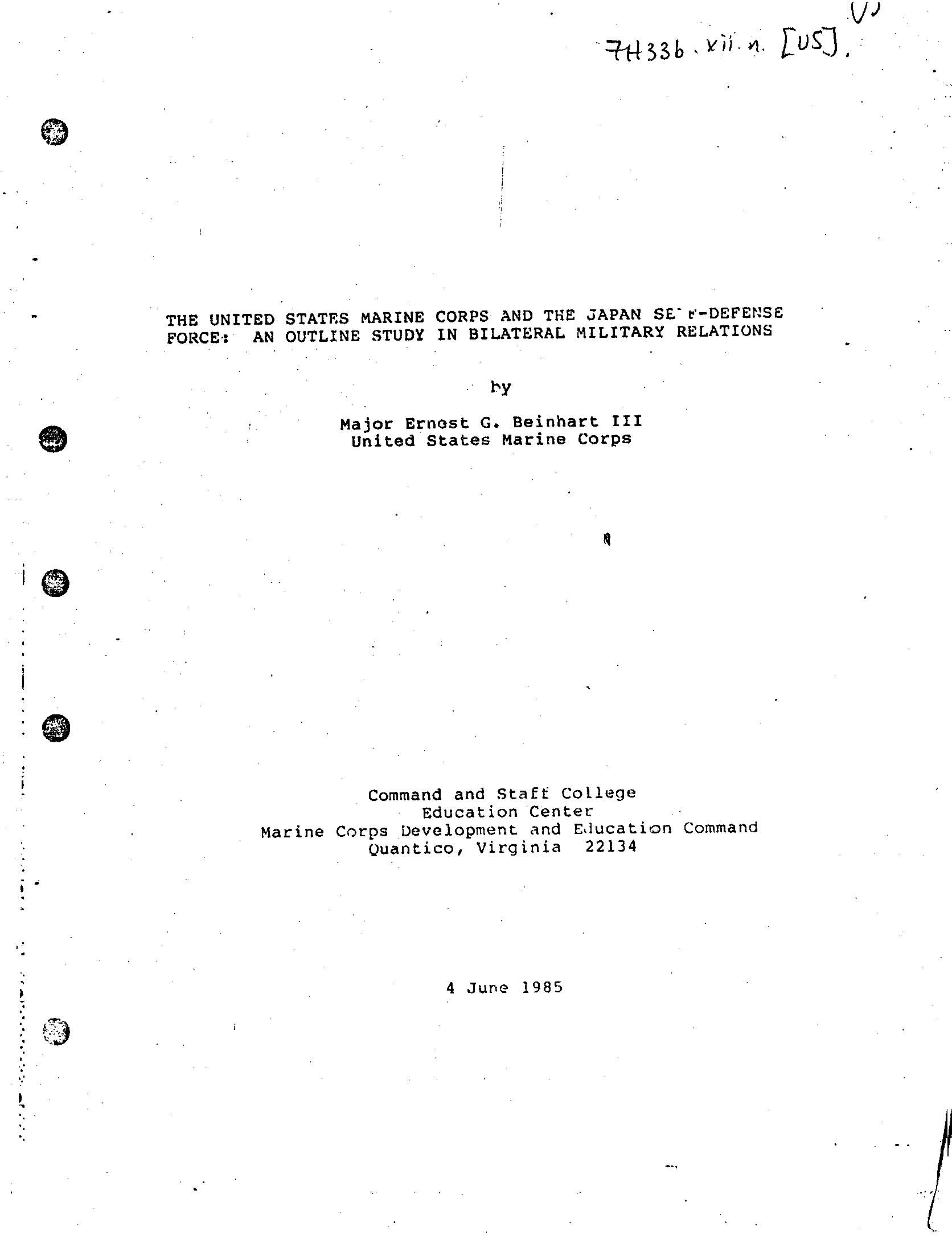
During the 1970s, Japan had transformed its economy into one of the leading economies in the world with a GNP second only to the United States. Japan’s military prowess, however, had not been in keeping with her economic might as the country relied heavily on the U.S. for national security. Limits in the Japanese constitution, a brief economic slump in the mid-1980s, a strong animosity towards military build up among the Japanese people and the geographical importance of Japan in the Cold War complicated America’s calls for Japan to increase its efforts in taking control of its national defense. Major Ernest G. Beinhart III’s 1985 report assesses the role the growing relationship between the Japan Self-Defense Force and the United States Marine Corps had in influencing changes in Japan. The report considers the defense policy of Japan, the organization and structure of the USMC and the JSDF and development of USMC-JSDF relations.
This report was released to the Nautilus Institute under the US Freedom of Information Act (FOIA). See the Institute’s FOIA Global Disclosure Project page to read more chronologies, histories and reports released to Nautilus.
Go to the articleThe UN Security Council Resolution 1540: An Overview of Extraterritorial Controls Over Non-State WMD Proliferation
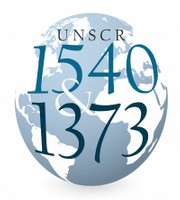
Jennifer M. Gibson, J.D. Candidate, and Sarah Shirazyan, J.S.D. Candidate, Stanford Law School, state that “Resolution 1540 has the potential to play an important role in forming universally recognized norms of state behavior with respect to WMDs. To do so, however, states must enact and enforce domestic controls over WMD material, wherever and whenever possible.” The authors. The following study assess the extent to which states have applied their domestic WMD controls extraterritorially by examining national reports and matrices submitted to the 1540 Committee to answer three questions. First, how many and which states apply their laws extraterritorially? Second, of those that do apply their laws extraterritorially, what is the scope of that application, i.e. does it apply to nuclear, biological and/or chemical materials? And, finally, what is the jurisdictional basis for the extraterritorial application?
This report is from the Nautilus Institute workshop “Cooperation to Control Non-State Nuclear Proliferation: Extra-Territorial Jurisdiction and UN Resolutions 1540 and 1373” held on April 4th and 5th in Washington DC with the Stanley Foundation and the Carnegie Endowment for International Peace.
Go to the articleNuclear and Conventional Extended Deterrence in a Northeast Asian Nuclear Weapons-Free Zone – Summary Report of the East Asia Nuclear Security Workshop
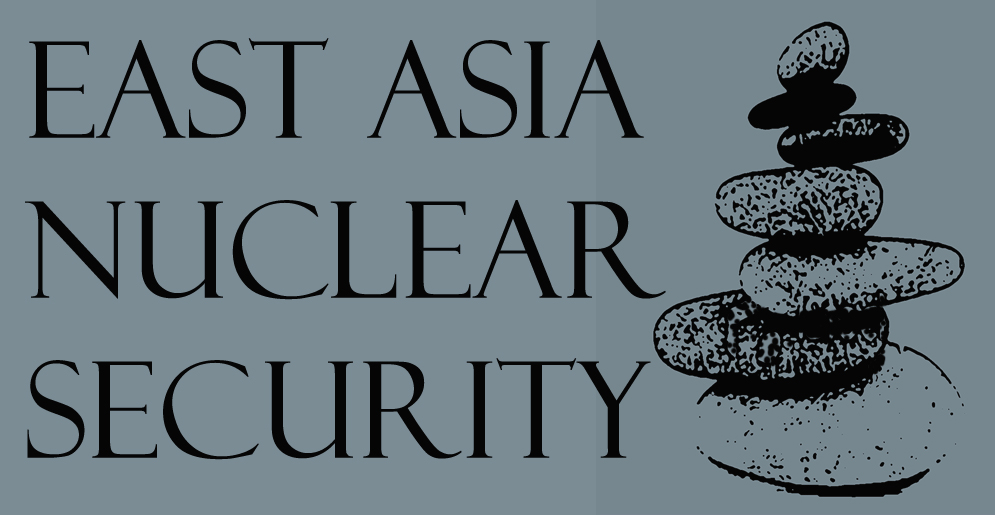
This summary report is based on the proceedings and presentations given at the East Asia Nuclear Security workshop held on November 11, 2011 in Tokyo, Japan. The workshop aimed to evaluate the robustness of proposals to establish a nuclear weapons-free zone in Northeast Asia (NEA-NWFZ) and to identify pathways leading to its creation. The workshop was organized by the Nautilus Institute, the Maureen and Mike Mansfield Foundation and Nautilus Australia – RMIT Global Studies, and co-hosted by the Asia Pacific Leadership Network.
Papers and presentations given at the East Asia Nuclear Workshop are available here, along with the full agenda, participant list and a workshop photo gallery.
Go to the articleREGIONAL RIVALRIES AND NUCLEAR RESPONSES – Volume II – The South Korean Case: A Nuclear Weapons Program Embedded in an Environment of Great Power Concerns
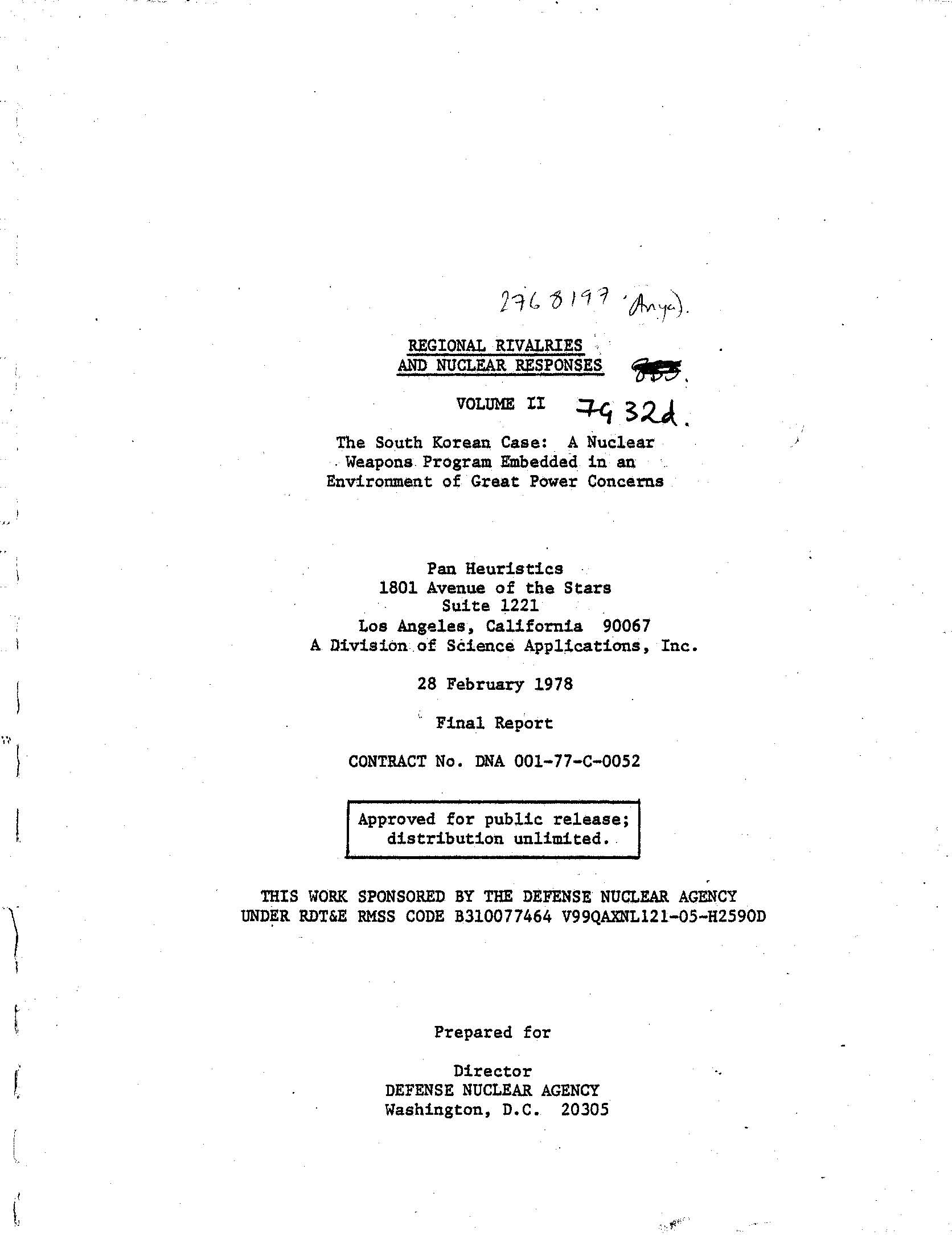
This 1978 report by Bryan Jack is the second volume of a three part report that considers the possible role of nuclear weapons that might be possessed by new nuclear powers in three key regions-the Arabian Sea, Northeast Asia and the South China Sea. This volume focuses on China, Korea and Japan and the particular circumstances facing each country, including: what might influence the decision to acquire nuclear weapons, the kind of weapons systems that might be acquired, possible types of weapons deployment both for deterrence or actual use, the impact on regional security of weapons acquisition and the policies that might be adopted by states in the region and by the United States to deter acquisition or to mitigate the consequences if acquired.
This report was released to the Nautilus Institute under the US Freedom of Information Act (FOIA). See the Institute’s FOIA Global Disclosure Project page to read more chronologies, histories and reports released to Nautilus.
Go to the articleChinese Nuclear Strategic Policies, 1958-1972: The Impact of External Threats, International Politics, and Technology
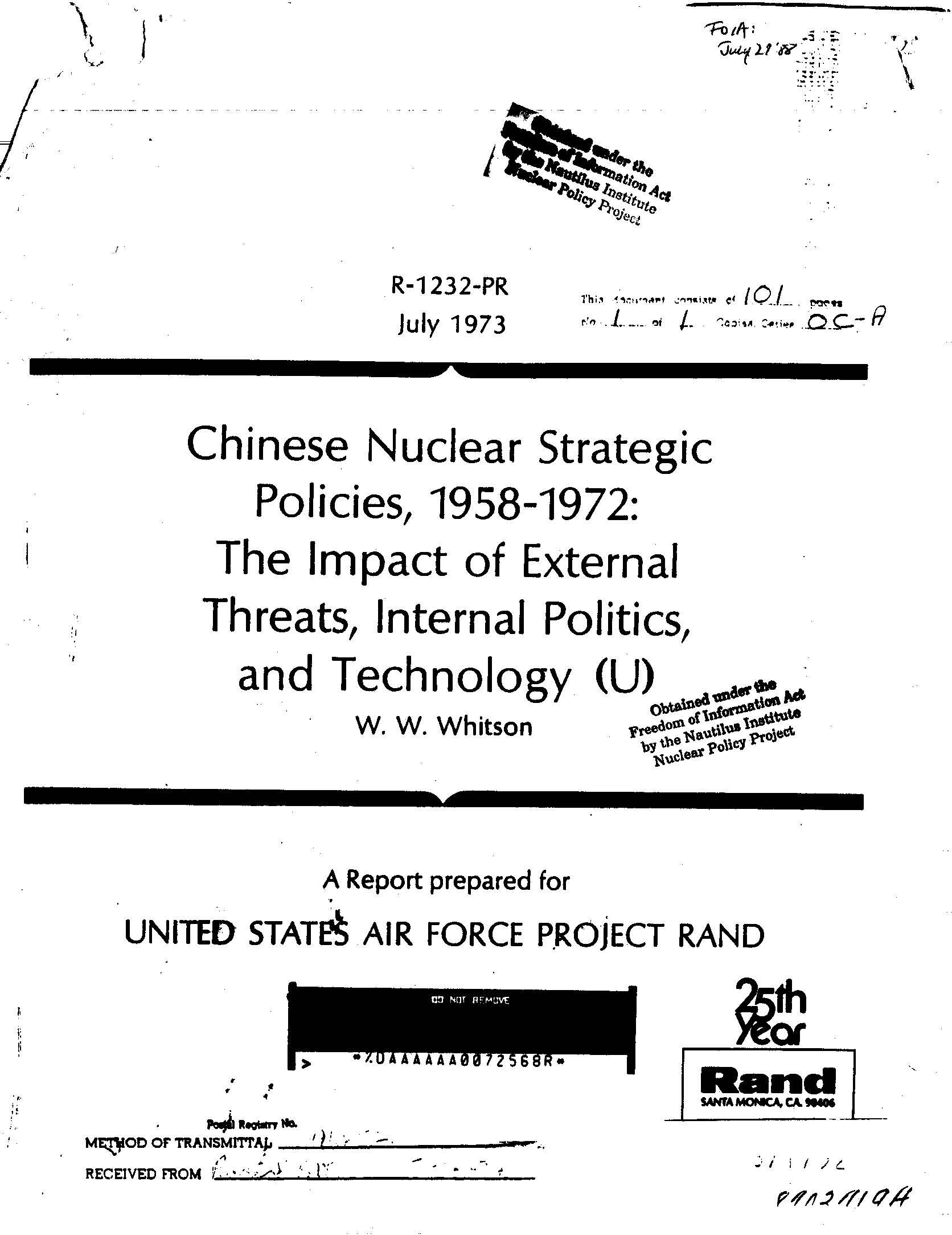
This 1973 report by W.W. Whiston is the first of a two-part analysis of Chinese nuclear policy and weapons options carried out as a part of the U.S. Air Force Project RAND’s studies of the implications of Soviet and Chinese military policy and strategy for Air Force planning. It examines (1) internal political and ideological conflict, (2) alternative military strategies for coping with external versus internal threats, and (3) nuclear technological capabilities from 1958 to 1972. Whiston examines how the Mao-Liu divide impacted the military structure and organization and the newborn nuclear weapons program in the 1960s.
This report was released to the Nautilus Institute under the US Freedom of Information Act (FOIA). See the Institute’s FOIA Global Disclosure Project page to read more chronologies, histories and reports released to Nautilus.
Go to the articleAir Operations in the Taiwan Crisis of 1958
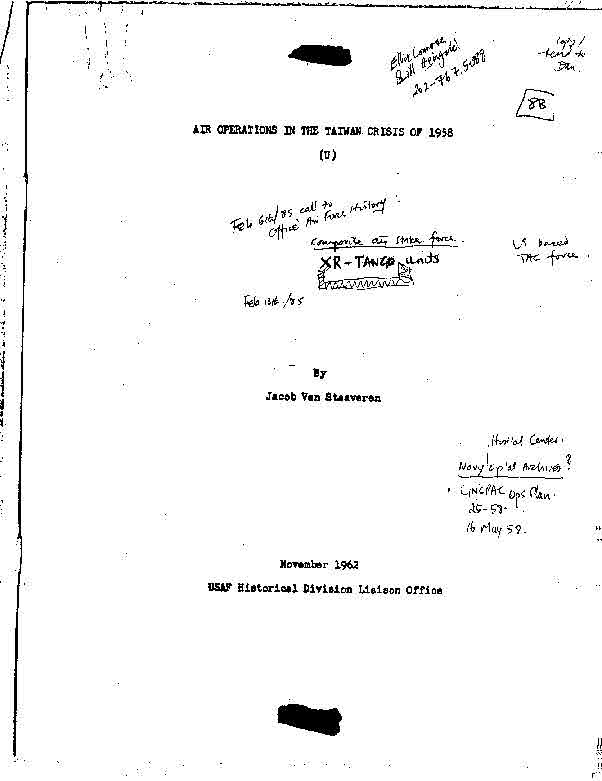
This report is one of a series of studies on air operations in international incidents, prepared by the USAF Historical Division Liaison Office at the request of the Directorate of Plans, Headquarters USAF. This historical narrative, by Jacob Van Staaveren, is based on primary source materials available in 1960–messages and correspondence–and on histories from many levels of the Air Force, including units, commands, and the Air Staff. As Staaveren’s report demonstrates, the crisis in 1958 provided a test of American military planning concepts. Occurring in the Pacific almost simultaneously with the Lebanon crisis of July-August 1958, it created certain planning, operational and logistical problems that had not been anticipated.
This report was released to the Nautilus Institute under the US Freedom of Information Act (FOIA). See the Institute’s FOIA Global Disclosure Project page to read more chronologies, histories and reports released to Nautilus.
Go to the article
